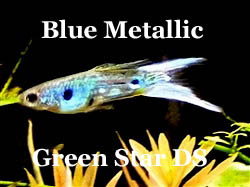Art VI
Guppy: a new vision on the Genetics of the Types (4)
RUBRIEK: Guppy Kweek English Translation
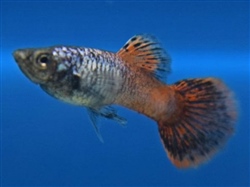
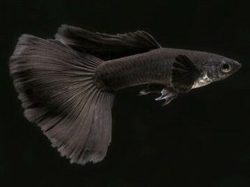
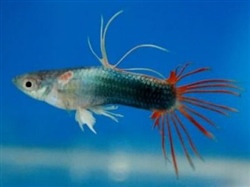

We have now arrived in our guppy story through time at the end of the 90's - early 2000's. Countless guppy breeders spread over all continents have for decades with great dedication and care, explored the genetic potential of the gup in its remotest corners and most obscure sides. And they have brought out the best and the worst from the guppy. The best: a lot of new markings and color patterns that have given birth to new gup strains and types; and of course also the further improvement of the already existing strains. The worst: real monsters grown with the same application. Freaks with extremely elongated or frayed fins, which can swim and mate with difficulty. And ultra recessive, monochrome and thus attenuated homozy-gotes. The original color splendor of the millionfish is hard to find (see above and left).
It is therefore no coincidence that around 2005 the Endler gup suddenly got all the covers of the trade and enthusiast magazines as the "new, hot-test thing". And quite rightly, real gems adorn the front pages, reminiscent of the pioneer days of the guppy with nostalgia. This also coincides with their recognition as a subgenus, as a separate subspecies with a separate name: poecilia wingei . Previously it was thought that they were guppies that had adapted in shallower pools and had developed slightly different shapes and colors (= modifications). But there are indeed genetic differen-ces between them.
Immediately a lot of growers are now this time, throwing themselves on this Endler. But wait a minute: the impact of those beautiful photos is quickly tempered by the realization that this Endler is actually a miniature fish. This becomes clear when you experience it in its actual size as below: you have to look for it in the aquarium with a magnifying glass, as it were.
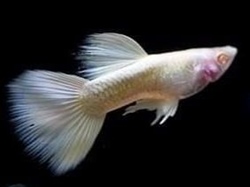
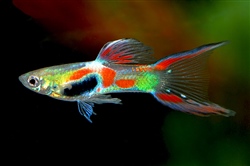
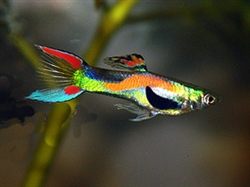
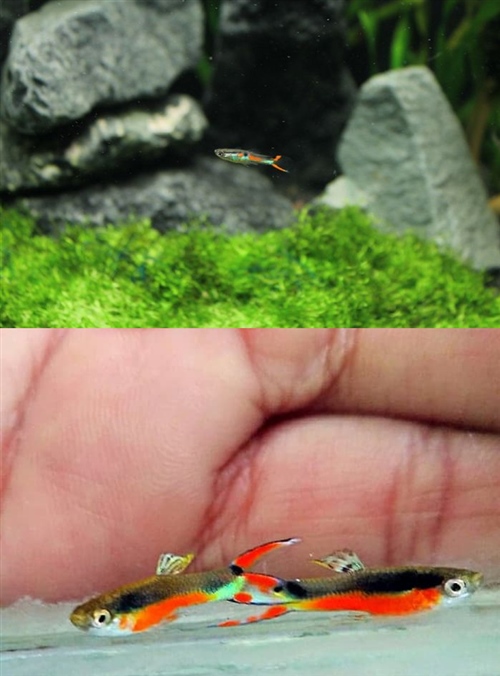
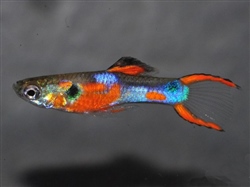
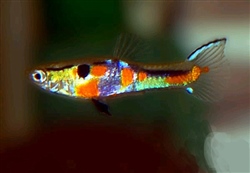
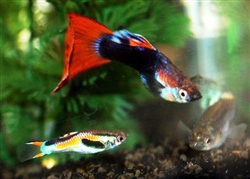
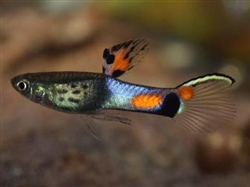
But since Endler and common guppy are closely related, they can be cros-sed with each other. In this way, the Endler experiences at an accelerated pace, almost the repetition of what the ordinary guppy had already expe-rienced. Initially, specimens were bred that were more intensive in color than the wild form. In essence, the Endler also has slightly deeper colors and contrasts in the wild, as it lives in slightly smaller pools in slightly smaller schools, and a little more hidden, so the fish have to find each other. But soon, by crossing with the guppy strains, Endler hybrids are bred, which suffer from the same problems and deficits as the guppy hybrids before.
At the same rate that new patterns and combinations are bred from the guppies into the Endler DNA, the bright and flamboyant colors make way for a duller and grayer palette. Growing guppies can sometimes be compa-red to painting: essential in painting is to mix the colors in such a way that they harmonize with each other, and to stop mixing and painting over in time. If this is not done, the painting will become dull and gray. Now, the Endler gup was "rediscovered" in the 1980's by Endler, so it can be assu-med that hybridization must have been going on for quite some time. Which immediately explains why it is difficult to find pure Endlers, and why they are divided into 3 classes: fish from wild caught and which were never crossed with guppies (N); fish that meet the characteristics of an Endler but whose origin cannot be proven (P); and finally the F1 or F2 of an Endler (K).
A trick to distinguish an Endler from a guppy: look at the dorsal fin. An Endler will seldom show a grown dorsal fin, but will have a short, rounded "rudder". As in the picture below left, with a guppy at the top and an Endler (K) from the same culture at the bottom. But this is of course not absolutely waterproof. The moral of the Endler story: accept a new sub-species in its specific traits, and don't make a fuss of it. Learn from the mistakes made with guppy breeding in the past. Because what is a strength of a species - namely its great variability - is at the same time also its weakness: overhybridization. That is why in nature there is the mechanism of natural selection, which limits this, and installs a certain harmony with (local) fluctuations within specific variables.
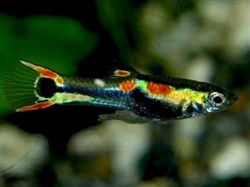
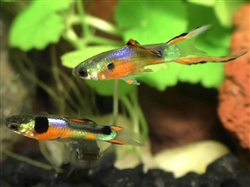
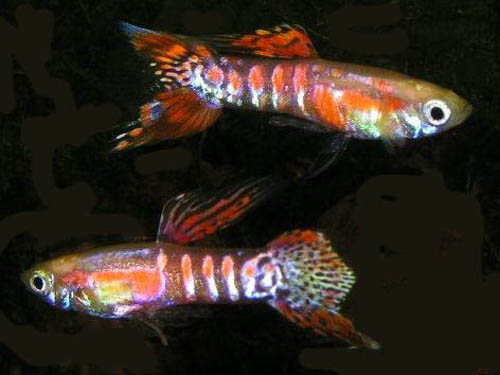
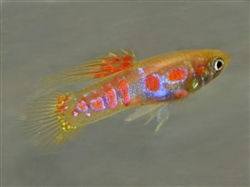
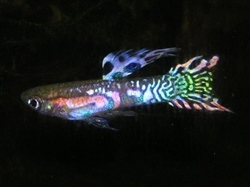
The Japanese grower Kenjiro Tanaka has even made it his trademark. Under the motto back to basics and based on wild guppies, he bred a type of gup with a short caudal fin, but with very bright colors and con-trasts, which he named Ginga Kinubali (literally: rice cake). The variability is great, and to the extent that many people wonder whether this is indeed a real strain. After all, the criteria are quite flexible and variable in terms of drawings and colors. And in that sense they even give different names depending on the dominant color: Ginga Rubra, for example, for fish with a lot of red as the base color and red dots instead of black (see above). Often these are blond to emphasize the red and yellow colors (see left).
This strain shows strong associations with the Vienna Emerald or Wiener Smaragd , and more specifically those who have swords in the caudal fin (see photos on the left). After all, the energy of a specific strain is channe-led to one aspect of the physical appearance: that energy can go to huge fans of tails, OR to intense colors on the body. The first comes at the ex-pense of the second, and vice versa. It is a matter of balance, and Japanese people in particular excel in seeking an elegant balance.
In any case, it calls for a renewed view of the nature of the guppy, and a new vision for the guppy breeders. What is the goal? Do you want to create a sensation with a novelty, or just the satisfaction of breeding a gup that is as beautiful and harmonious as possible? Indeed, the truth compels us to say that ALL the possibilities of the guppy have been virtually explored and exploited. So there is actually nothing "new" to discover anymore: the gup-py has been "milked out". Unless there is a tendency to breed increasingly extreme fish, but this is going in the wrong direction. The history of the guppy therefore shows recurring fluctuations. The call for a more natural fish is once again set with this Ginga in 2016.
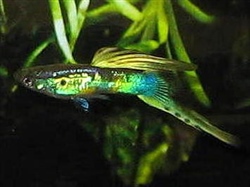
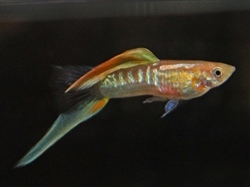
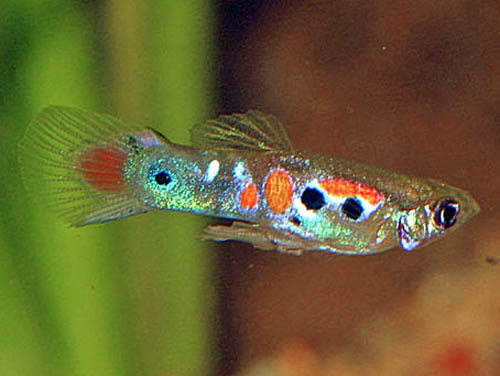
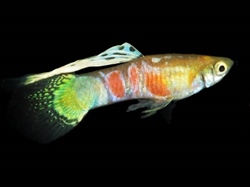
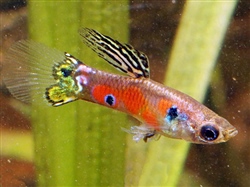
Hence the renewed interest in the "feral" or wild guppies. Not only as wild catch from the area of origin of the gup (Central and North of South Ame-rica), but also in those countries where they were released or thrive for one reason or another (including Thailand, Australia,. .....). When a Thai grower suggested on Facebook about a certain culture of which he was not completely satisfied that he would put them back "in the channel", I answered him that this was not possible in our regions. After all, guppies can only be kept out in a temperate climate zone from late May to late September, given their need for warmer temperatures. But in the cooling water of nuclear power plants, for example, they can often last longer than one season.
David Bierbach has investigated such a population in Germany in 2016 systematicly, which resulted in finds as shown in the compilation photo below. What is striking is that we see the same types of guppies appearing here that could be found in aquariums in the pioneer years: specimens with color spots on the specific color zones; receding tail fins to small double swords, spatula or bottom swords; marginal notes on the caudal fin; black spots or "eyes" bordered with white; black frame of the tail-fin and rear body (nigrocaudatus). Exactly the same evolution, but in the reverse , regressive direction. The captured females also regressed to tail fin completely colorless specimens to a kind of pale or "soaked" HB.
This completes the story of the guppy, because after a history of more than 65 years we have returned to the starting point: the archetypal wild guppy, the colorful rainbow fish, the million-fish.
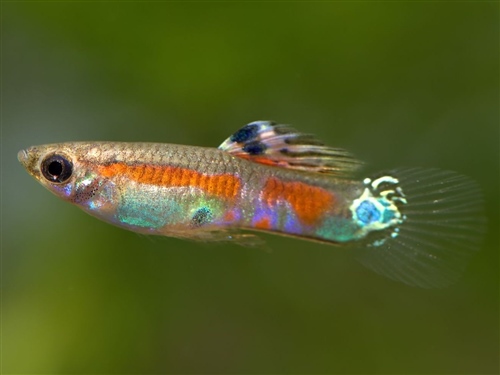
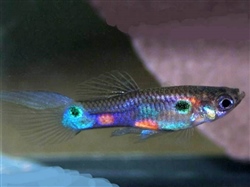
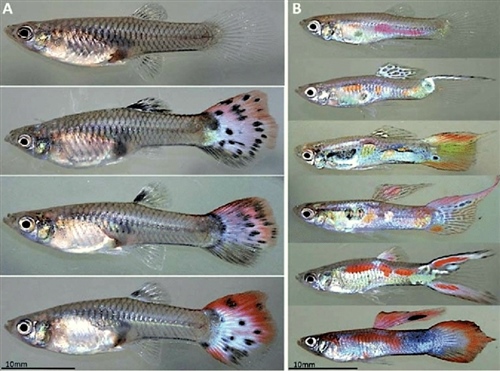
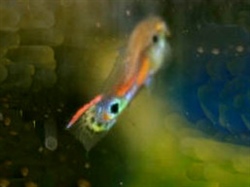

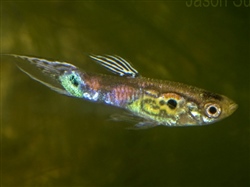

Let me make a comment in the margin about the caudal base of the caudal fin: it is not only the lace motif that originates from there, which can occur in all kinds of colors (white, yellow, green, blue, .... see photos above left). If a color radiates over the caudal fin, one can also see a beautiful star-shaped figure, whether or not flanked by a spot of that color. The blue-green star in particular is beautifully iridescent and fluorescent. After all, that is the same source from which the green-blue tail root starts in the old-fashioned blue mosaic deltas (see photo opposite).
By coincidence this "jewel" turned up in the blue-green double-sword strain that I am growing, and I think it is so beautiful that I will continue breeding with it. On that video below you can see the two males that I have selected. Their metallic property enhances the fluorescent color of that green-blue tail spot. That caudal spot looks like a star with radiations: that's why I named this combination GREEN STAR . Growing new variaties is still one of the possibilities and the pleasure.
